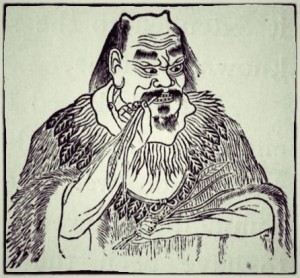The Bladder Secondary Channels
THE BLADDER LUO-CONNECTING CHANNEL:
- Separates from the primary channel at Feiyang UB58 and connects with the Kidney channel.
THE BLADDER DIVERGENT CHANNEL:
- Diverges from the primary channel in the popliteal fossa and ascends to a point five cun inferior to the sacrum, then winds round the anus, connecting with the Bladder and dispersing in the Kidneys,
- Ascends alongside the spine and disperses in the cardiac region, then emerges at the neck to rejoin the Bladder primary channel.
THE BLADDER SINEW CHANNEL:
- Originates at the little toe and ascends past the lateral malleolus, and then ascends to bind at the (lateral aspect of) the knee,
- Another branch separates below the lateral malleolus and binds at the heel, then ascends along the Achilles tendon to the lateral aspect of the popliteal fossa,
- Another branch separates from this branch in the calf (at the convergence of the two heads of the gastrocnemius muscle) and ascends to the medial aspect of the popliteal fossa,
- The two branches join in the gluteal region and ascend to bind at the buttock,
- The channel then ascends laterally along the spine to the nape of the neck, where a branch penetrates to bind at the root of the tongue,
- The main ascending branch continues upwards to bind at the occipital bone, and ascends over the crown of the head to bind at the bridge of the nose, then circles the eye and binds at the cheek bone,
- Another branch separates on the back and ascends to the medial side of the posterior axillary crease, then binds at Jianyu LI15,
- Another branch crosses beneath the axilla and ascends the chest to emerge at the supraclavicular fossa, then ascends to bind at Wangu GB-12 behind the ear, and finally another branch, after emerging from the supraclavicular fossa, rises to the cheek bone alongside the nose.
Related

